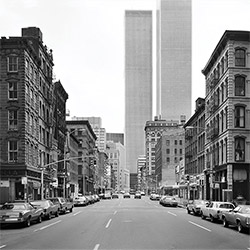
A little bit of personal history here. In the fall of 1976, I began assisting John Fischer in the running of the loft space Environ, at 476 Broadway in New York City. At the time, my area of concentration was American avant-garde jazz, specifically that represented by the AACM, BAG, etc., many of whose members had moved to New York in the years just prior, making for an exceptionally exciting milieu. My knowledge of what would sometimes come to be called European Free Improvisation (efi) was fairly minimal. I think my first exposure via LP was, in 1973, acquiring the ECM release, Music Improvisation Company (likely, as with many, due to the presence of ex-King Crimson member Jamie Muir). It was there I first heard Derek Bailey, Hugh Davies and Evan Parker. I imagine I heard more via radio (WKCR) in the intervening years, but at the time, I was less interested in what was derisively termed, "plinky-plonky insect music" than the vital art being created by black Americans. In 1977-78, Environ hosted several European improvisers including Alex von Schlippenbach and Han Bennink. I enjoyed them to an extent (Bennink using his 6-foot long drumsticks playing Environ's walls stands out as a fond memory) but by and large I remained unconvinced and anticipated bookings like that of Parker with wariness.
But, man. Parker had recorded Monoceros, as yet unheard on these shores, a few months prior, signaling a leap into multiphonic circular breathing that sounded like nothing else out there. It was a jaw-dropping performance, happily recorded by a member of the audience. Six pieces contained herein, four on soprano, two on tenor. Parker plunges in on the first cut (soprano) the tones sounding like sheared strips of metal, raw and sharp, quickly coalescing into a ragged flow, like partially melted ore funneling down a sluice, non-stop, always the same but always different. Seventeen minutes later, the cascade ends, the audience astonished. He continues on tenor, a short exploration, brief pops and expostulations against a recurring buzz, the sounds soon congealing into a stream, thick and uneven, rock-strewn. Back to soprano for an investigation of chirping aspects; there's more Lacy in here than I remembered, kind of taking the older musician's discoveries and hyper-densifying them. This piece is more episodic, the chirping giving way to a steady flow, then a more "standard" few minutes of playing, again a bit reminiscent of Lacy's work from around the same time.
So it goes, more or less alternating between the onrushing streams and more staggered, stabbing passages, all primo Parker. As mentioned, it's an audience recording and the sound might be a little boomy at times but really pretty good, all things considered. More importantly, that sense of excitement, of stepping into the unknown, is still there in 1978, making this an invaluable document.
Comments and Feedback:



More Recent Reviews, Articles, and Interviews @ The Squid's Ear...


|

